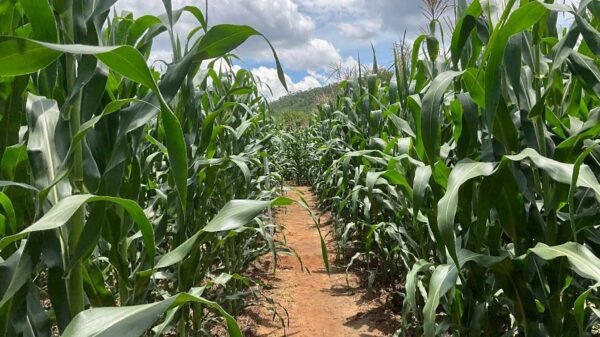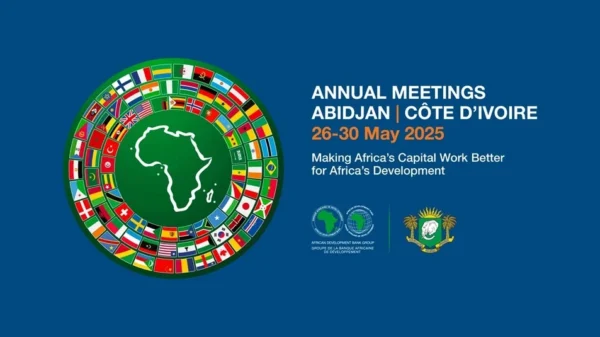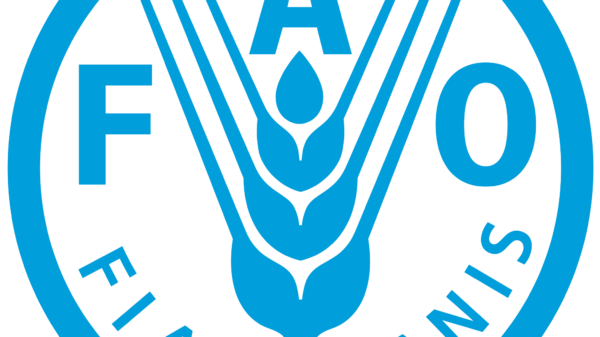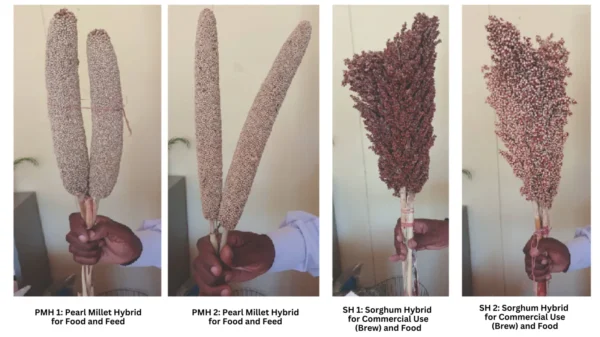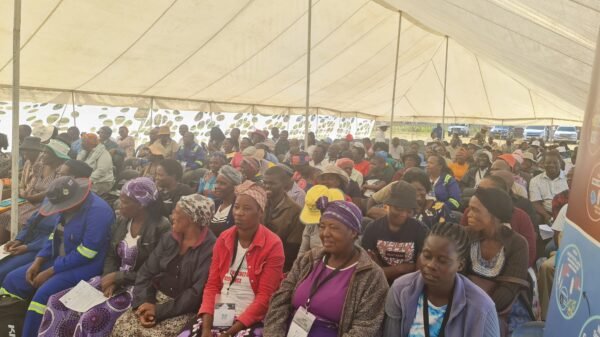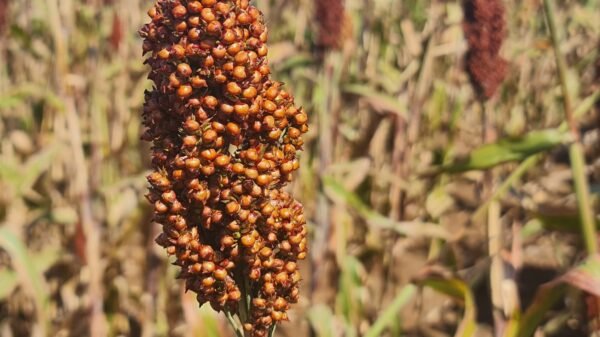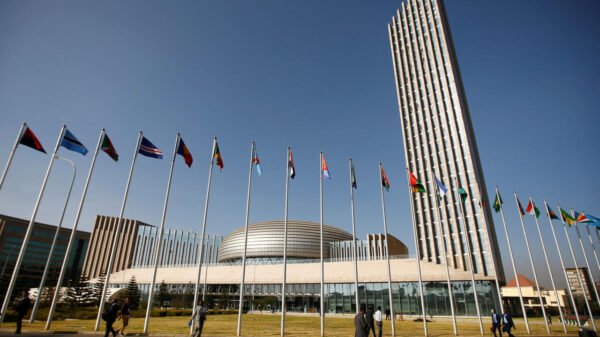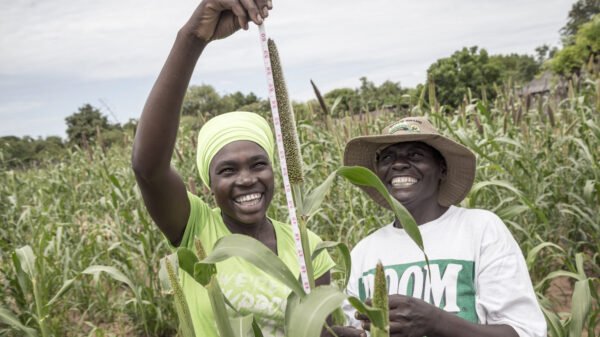By Brezh Malaba in Bhubaneswar, India
FOOD is a significant ingredient of India’s diverse cultural heritage. Most outsiders wrongly assume that the vast culinary offering of the South Asian powerhouse is all about hot spices and nothing else. But there is, in fact, more to Indian dishes than just spicy food.
It was Robert Blackwill who famously described India as “a pluralist society that creates magic with democracy, rule of law and individual freedom, community relations and cultural diversity”. When it comes to the Asian country’s culinary offerings, the surprises are endless.
In both India and Africa, pearl millet dates back centuries ago, but the Asian country has taken this superfood to greater heights by creating amazing value chains for a crop also known as a “future food”. Journalist Brezh Malaba visited the city of Bhabaneswar, the capital of northeastern Odisha state, 65km from the Bay of Bengal. The Odisha Millets Mission is a remarkable showcase of food security strategy, economic ingenuity and the pursuit of sustainable livelihoods.
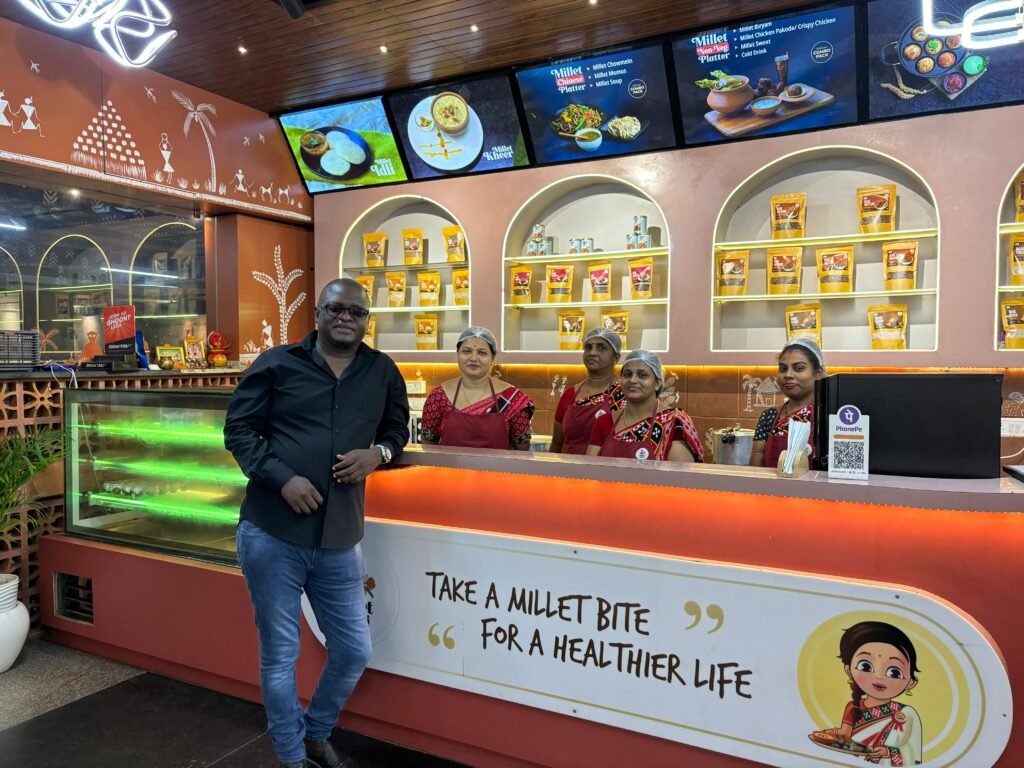
Healthier lifestyle…The writer prepares to order a meal at the Millet Café located inside Bhubaneswar’s gleaming-new BSABT bus terminus, an architecturally imposing edifice which has transformed the face of the Odisha state capital.
The millet cafés, established under the Odisha Millets Mission programme, are very impressive in their range of dishes and culinary creativity. Not only that. They are strategically located to target specific market segments.
The Odisha Millets Mission was launched in 2017 by the Odisha state government as a special programme to promote the production, processing, consumption and marketing of small grains.
Each café is owned and operated by a partnership of 16 women. These self-help groups (SHGs) are propelling what has blossomed into a movement. The business model is designed to stimulate economic development by empowering women at household level.
The hi-tech BSABT bus terminus, built at a cost of US$25 million, changed the dynamics of public transportation when it opened in 2023. More than 50 buses are dispatched from the rank to destinations scattered across the northeastern state. It is a modern facility, complete with retail shops, medical clinic, pharmacy, baby feeding room, eateries, and conference room. The Millet Café has found pride of place in the modern complex.
“The decision to open a shop at this bus terminus was taken deliberately. The idea was to ride on the allure of the new facility. People appreciate this new terminus, so it made sense to open a shop here,” an official from the Watershed Support Services and Activities Network (WASSAN) explained. WASSAN is the implementation agency of the Odisha Millets Mission.
At Bocca Café in central Bhubaneswar, the specials on the menu included Mexican Millet, Millet Salad, Millet Pancake, Millet Croissant, Millet Muffin and Rogi Brownie. But by far the best-performing café is the Millet Shakti Outlet (pictured) located at Bhubenaswar’s state-of-the-art Kalinga Stadium sports complex. Built in 2022, the sprawling ultra-modern complex has facilities for field hockey, gym, football, athletics, swimming, tennis, table tennis, volleyball, climbing, basketball and will soon see the introduction of a badminton section. The idea of opening a millet café in the heart of this huge sporting centre was a masterstroke. In general, people who play sport and many of the spectators who throng the stadiums tend to be health-conscious individuals already—and this provides a captive market for the millet products. Inside the café, the friendly staff proudly display trophies won by their outlet for business excellence.
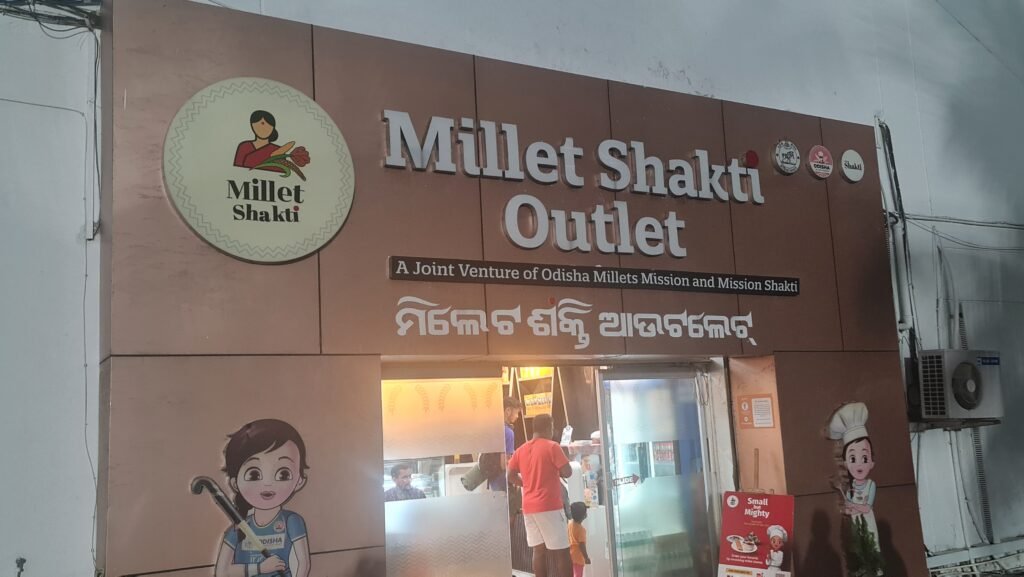
The Millet Outlet at the sprawling Kalinga Stadium sports complex in Bhubaneswar is strategically located to cater for athletes and spectators who throng the facility, located at the heart of the city.
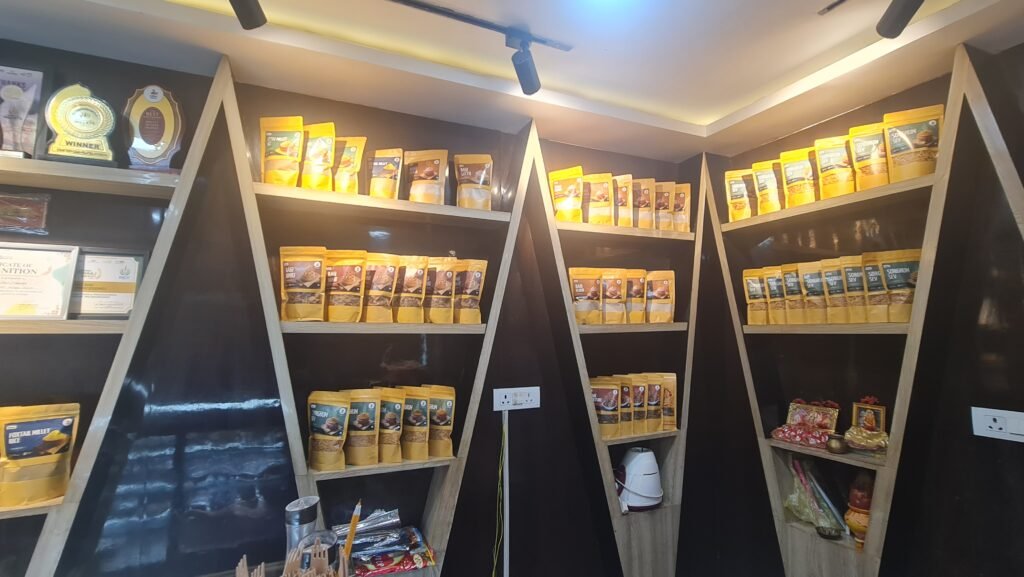
Diverse products on display in the Millet Café at Kalinga Stadium.
The power of value chains
The Millet Café business model centred on women’s groups is replicated in the millet-processing small-scale factories run by self-help groups. The self-help groups, comprised entirely of women, are in the business of procuring, processing and packaging the millet. The products emanating from this value chain are marketed and sold to the millet cafés and other outlets. The product range includes various types of millet-meal; biscuits; Ragi Mixture (a crunchy snack); Ragi Murukku (crunchy snack in different sizes and flavours); Millet Bite (also known as Ragi Cookies); Ragi Flour; Ragi Sattu (nutritious food made from ragi flour and can be consumed in a variety of ways including as a drink); Sorghum Sev (a crispy snack made from sorghum); Little Millet Rice (millet processed into rice-like grains); Foxtail Millet Rice; and Ragi Nimki (made from finger millet).
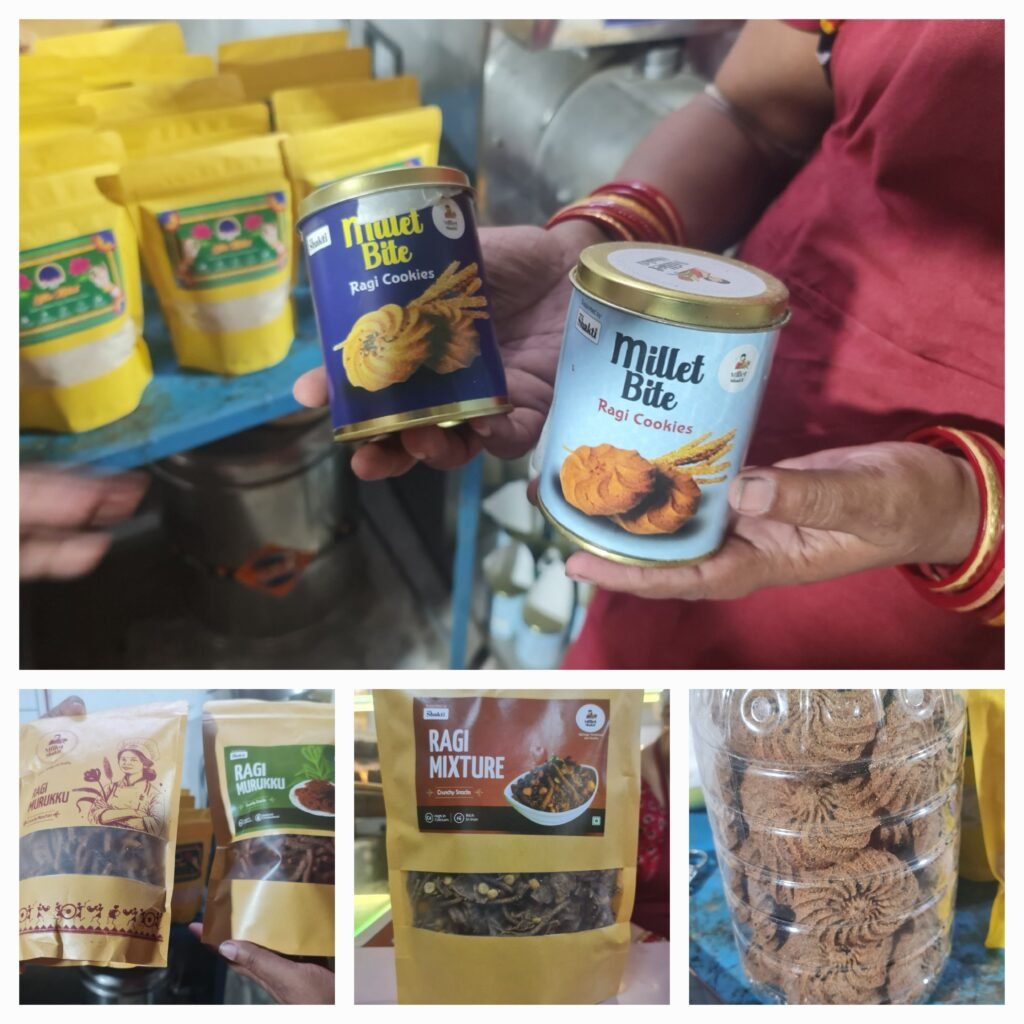
Products galore…foodstuffs from millet are virtually limitless.
This reporter toured one processing unit in Bhubaneswar. The group uses equipment made by a local university in conjunction with the state government. The appropriate technology is the result of homegrown solutions. The equipment includes a millet de-stoner, grader, de-huller, and aggregator. During processing, the small grain is taken through various stages of cleaning and grading.
Why communication matters
The value chain for small grains—what agricultural economists term “from farm to plate”—encompasses input suppliers, farmers, commodity brokers, processors, retailers and ultimately the consumers.
These respective stages in the value chain cannot exist in isolation; the production chain is an entire ecosystem, with inter-dependent parts. But the promotion of small grains requires much more than just a value chain. Consumer behaviour, when it comes to food, is difficult to influence and change.
Comparatively, India has surpassed Zimbabwe in the promotion of these superfoods. By implementing pragmatic policies that go beyond mere sloganeering, India is making progress in placing smallholder farmers at the centre of the agricultural development agenda. It is not a perfect system, but there are considerable successes. There are sustained efforts to build a whole new sub-segment in the food sector anchored on millet, sorghum and other “forgotten crops”.
A central plank of India’s millet-promotion strategy is communication. Schools, civil servants, social media influencers, brand ambassadors, restaurant chefs, and civil society groups are in the thick of things—sharing knowledge on nutrition, recipes and public policy.
Dr Upasana Mohanty, a prominent blogger on millets, told this reporter in Bhubaneswar that it has been a difficult but worthwhile task to convince millions of people to embrace small grains. Mohanty, who has 12 000 followers on Instagram, is a dental surgeon by profession. In her video clips, she rides on her medical training to effortlessly dispense nutritional tips and advice.
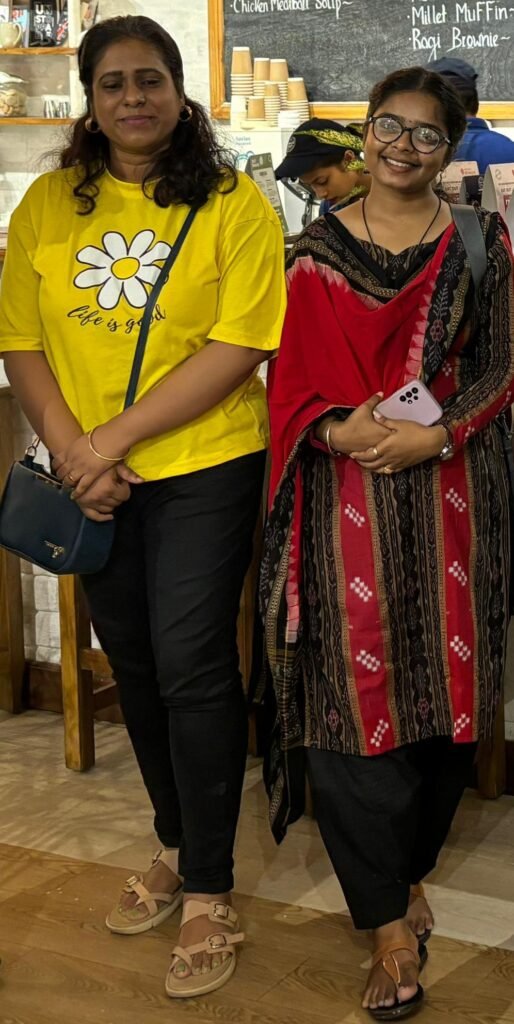
Social media influencer and dental surgeon Dr Upasana Mohanty (left) promotes millet recipes on Instagram.
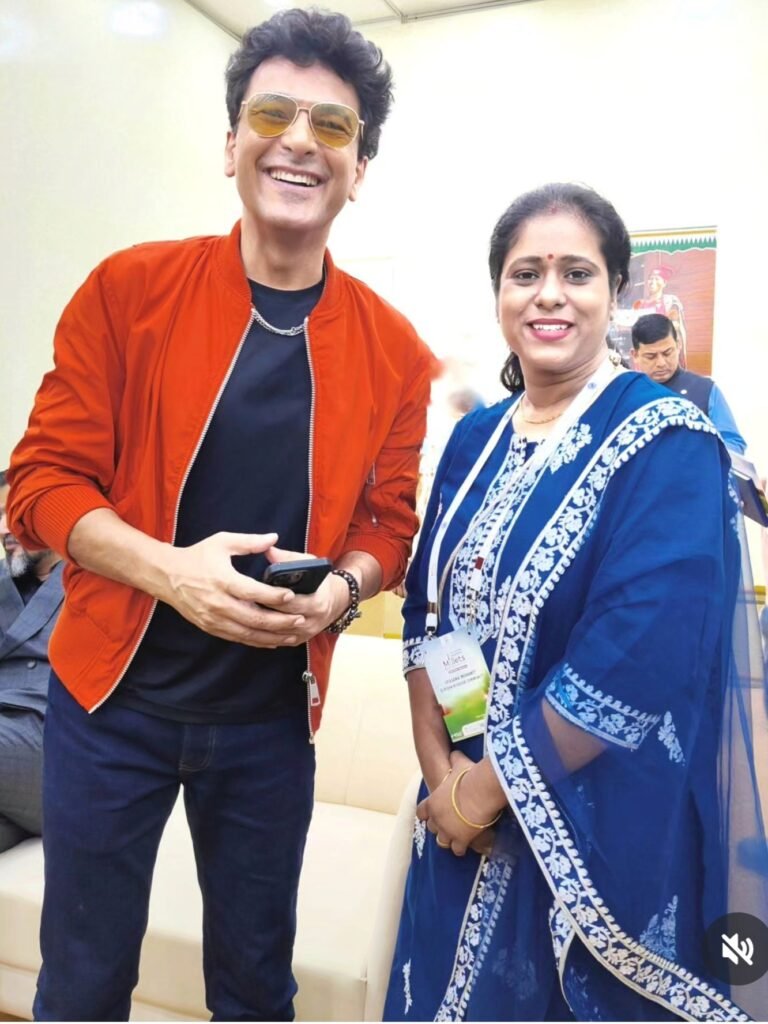
Dr Mohanty (right) with Michelin Star celebrity chef Vikash Khanna at an event organised by the Odisha Millets Mission.



